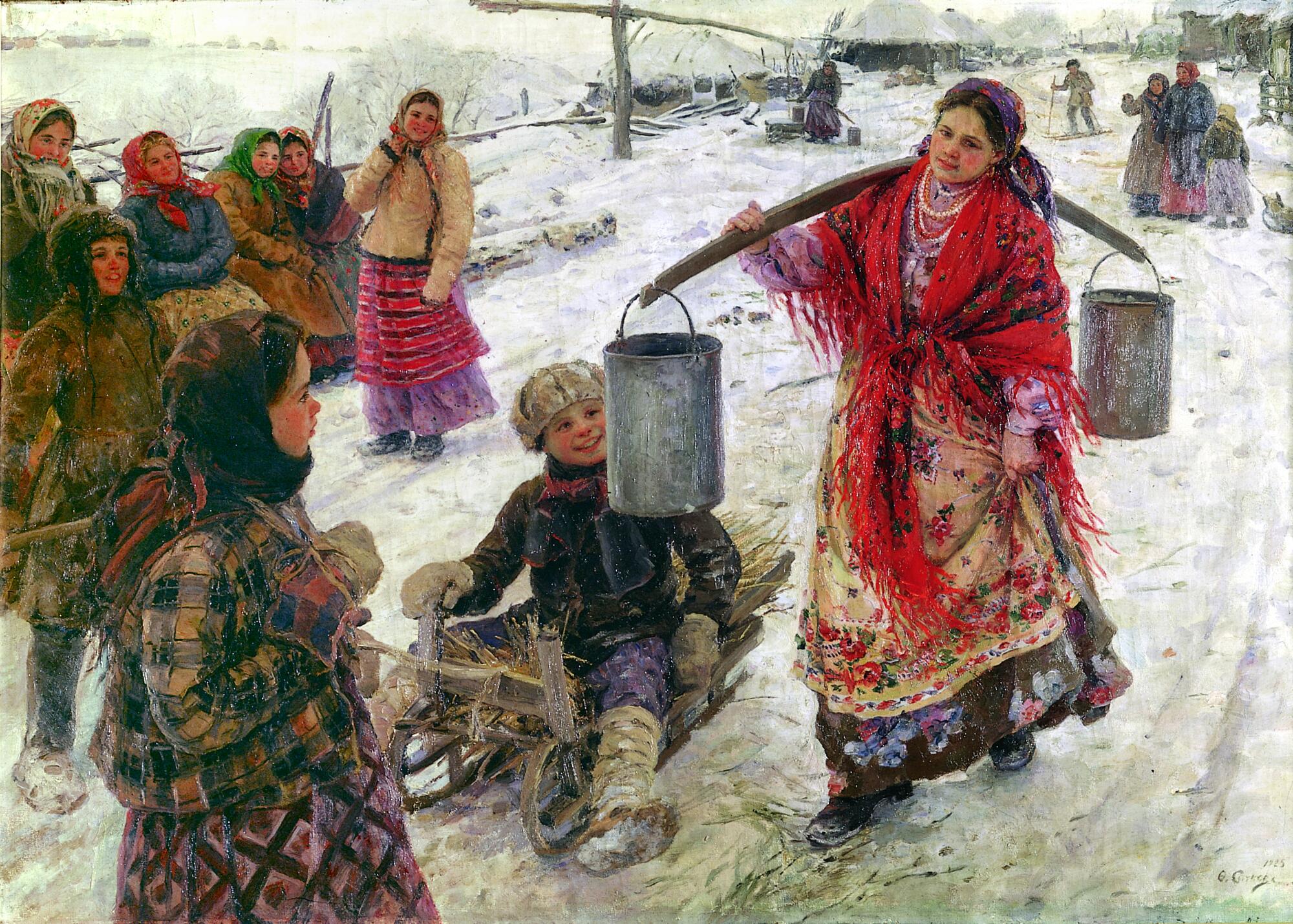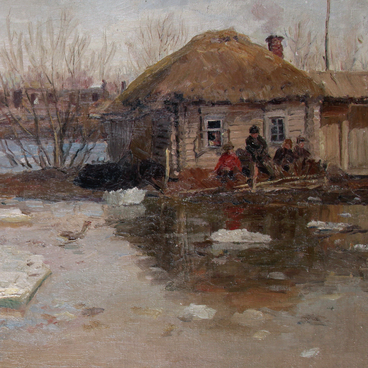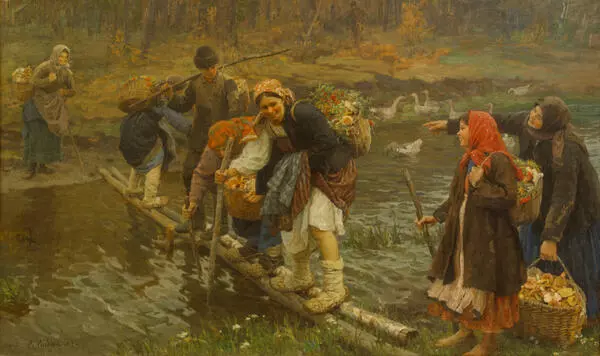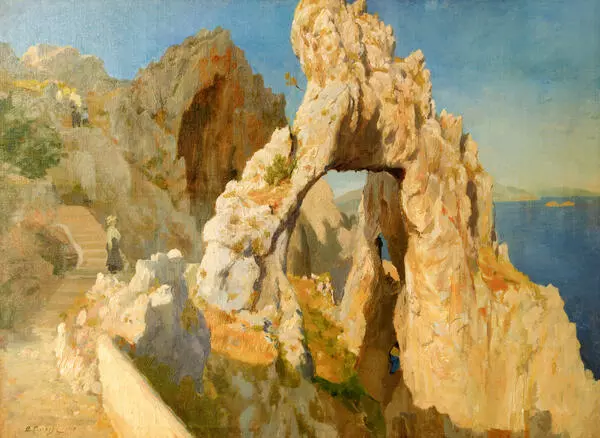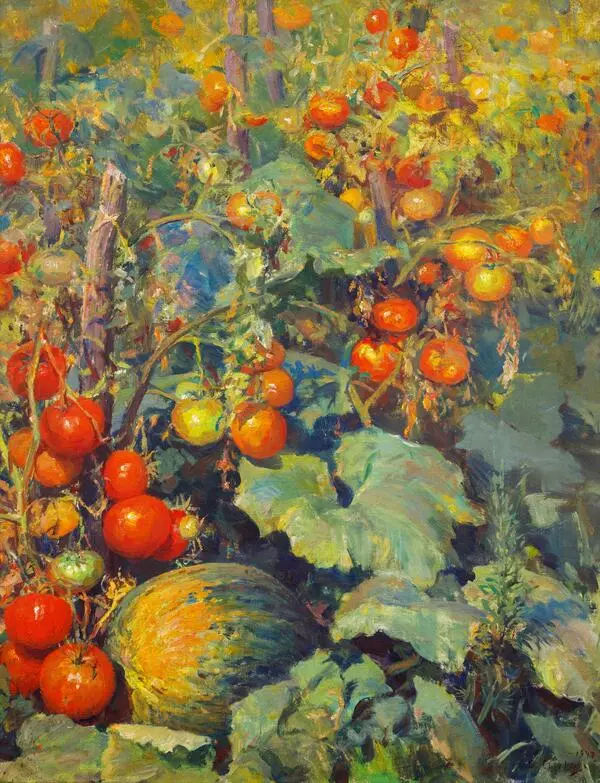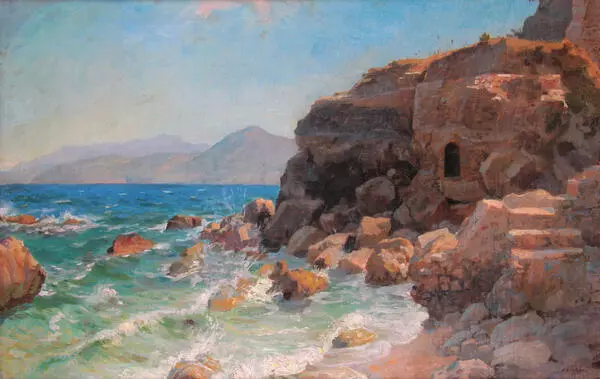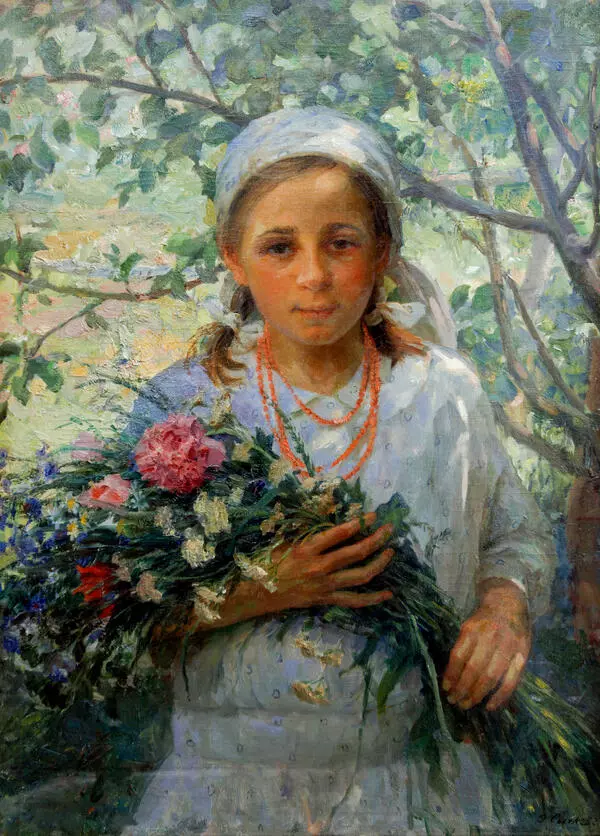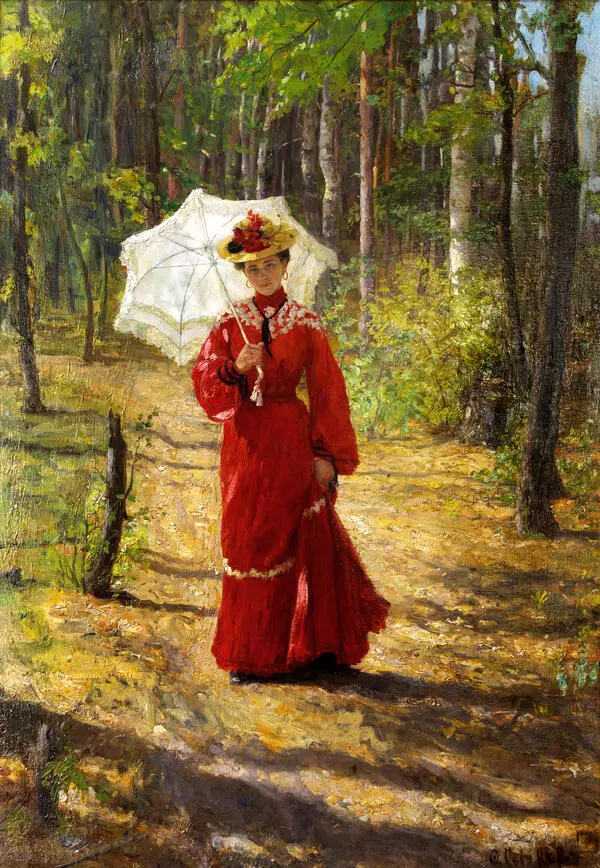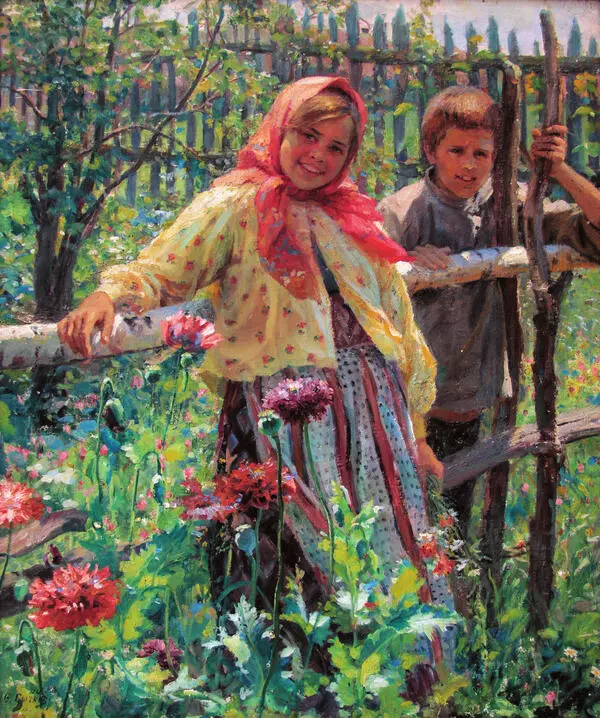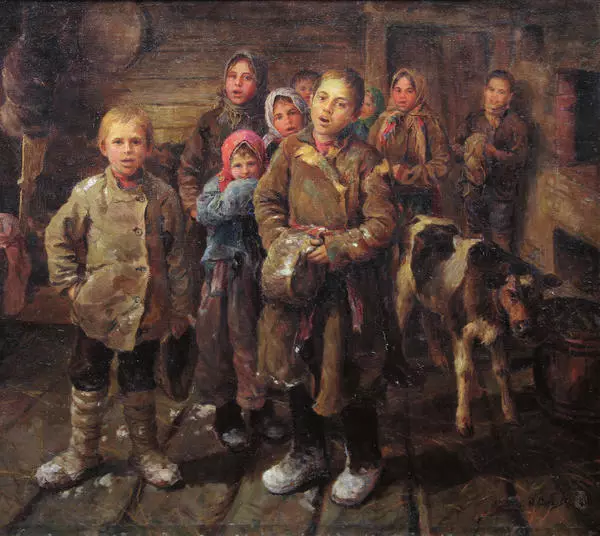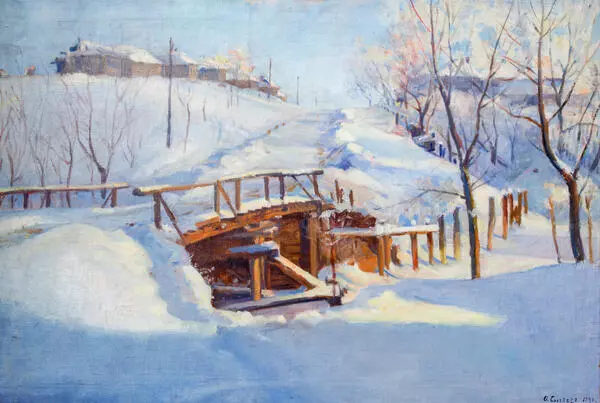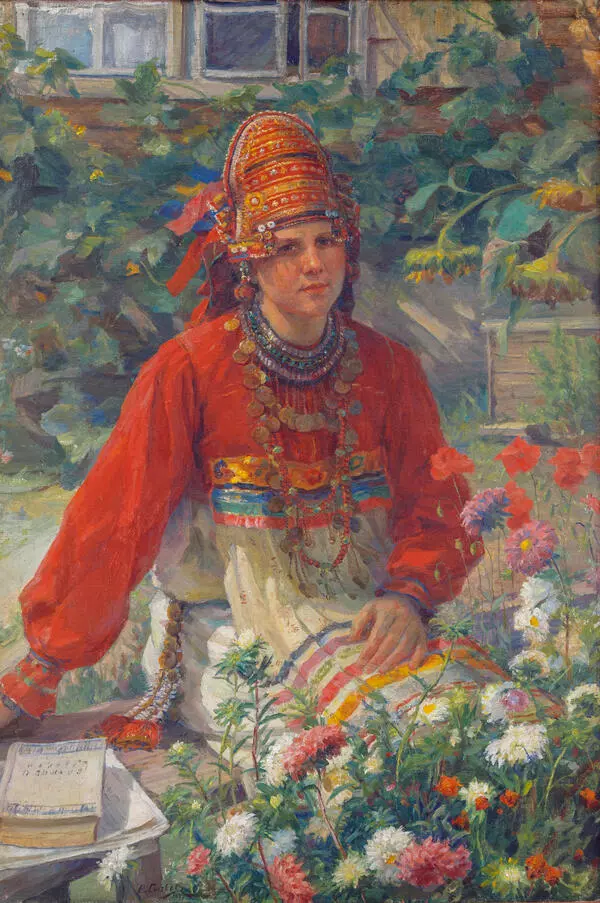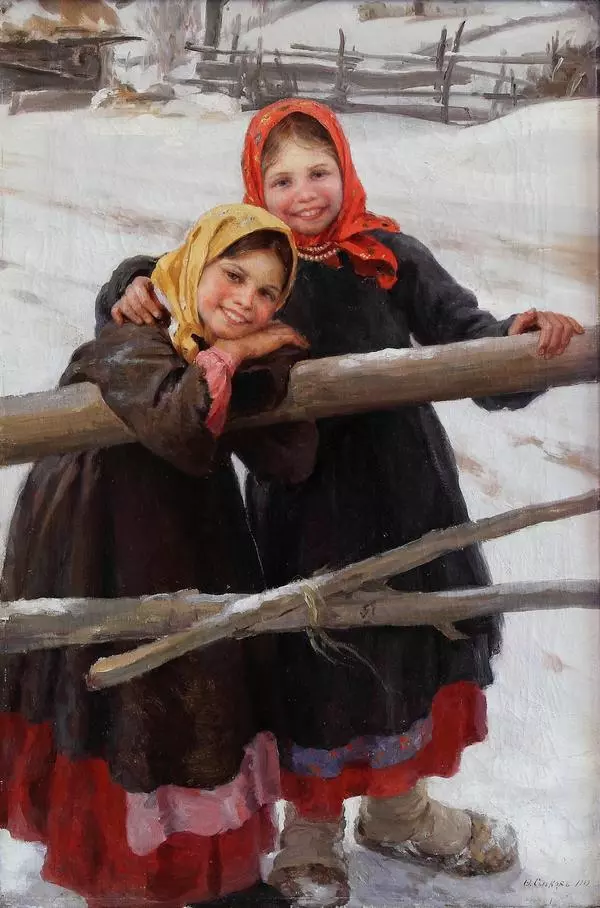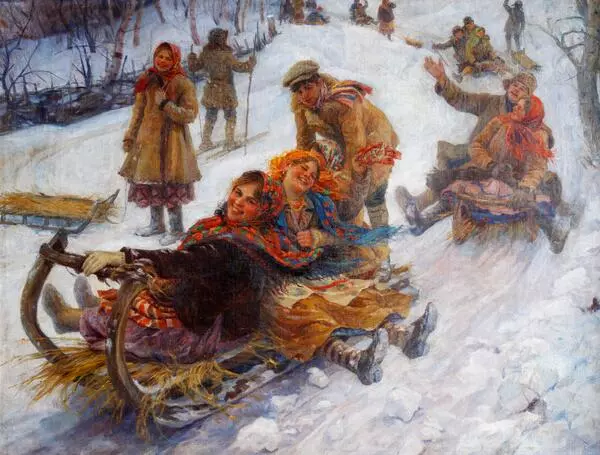Fedot Sychkov painted ‘Young Married Woman’ in 1925. The second name of the painting is ‘The Newlywed Woman in the Village’. The subject of the picture is the traditional village custom of going out to fetch water on the second day after the wedding. This event is connected with many ancient rituals. First, it showed that the woman took up the work around the house in her new family. Secondly, the filled buckets were a symbol of a house filled with happiness. Another rite maintained the custom of going out to fetch water: the young wife had to give something to the patroness of marriage and women’s crafts Saint Paraskevi of Iconium. Women threw a coin, or a ring into the water, or tied a kerchief to the well.
Fedot Sychkov depicted this emotional moment with great tenderness. The young wife has a light step, she is afraid to spill the water — ‘as if she carries her happiness’. Yesterday’s bride came out to meet her everyday life as if it were a holiday: she wears a long colorful dress, and a red Pavlovo Posad shawl is on her shoulders. The painter emphasized the solemnity of the moment with bright red clothes.
The artist also devoted his time and effort to the girl’s fellow villagers. The young woman, of course, attracts everyone’s attention. Women gossip, look at her and wonder what the life of the new family will be. A boy on a sled looks into the woman’s face with cheerful curiosity. A teenage girl looks at her steadily and seriously. Girls, who whisper and gaze at their friend, have mixed feelings. We can see admiration, envy, and hidden sadness in their eyes. The artist managed to see and show different types of characters in this simple scene.
The artist portrayed the nature around him with great skill. The snow on the village street seems to gleam in different colors: the master painted it with broad pearl-pink brush strokes. By lovingly depicting the surroundings of his native village, the artist showed his warm attitude to the model.
In 1926, the painting was displayed in the eighth exhibition of the Association of Artists of Revolutionary Russia, ‘The Life of the Peoples of the USSR’, in Moscow. Later, the artist exhibited is works in the capital several times: in 1952 and 1970, his personal anniversary exhibitions were held there.
Fedot Sychkov depicted this emotional moment with great tenderness. The young wife has a light step, she is afraid to spill the water — ‘as if she carries her happiness’. Yesterday’s bride came out to meet her everyday life as if it were a holiday: she wears a long colorful dress, and a red Pavlovo Posad shawl is on her shoulders. The painter emphasized the solemnity of the moment with bright red clothes.
The artist also devoted his time and effort to the girl’s fellow villagers. The young woman, of course, attracts everyone’s attention. Women gossip, look at her and wonder what the life of the new family will be. A boy on a sled looks into the woman’s face with cheerful curiosity. A teenage girl looks at her steadily and seriously. Girls, who whisper and gaze at their friend, have mixed feelings. We can see admiration, envy, and hidden sadness in their eyes. The artist managed to see and show different types of characters in this simple scene.
The artist portrayed the nature around him with great skill. The snow on the village street seems to gleam in different colors: the master painted it with broad pearl-pink brush strokes. By lovingly depicting the surroundings of his native village, the artist showed his warm attitude to the model.
In 1926, the painting was displayed in the eighth exhibition of the Association of Artists of Revolutionary Russia, ‘The Life of the Peoples of the USSR’, in Moscow. Later, the artist exhibited is works in the capital several times: in 1952 and 1970, his personal anniversary exhibitions were held there.
